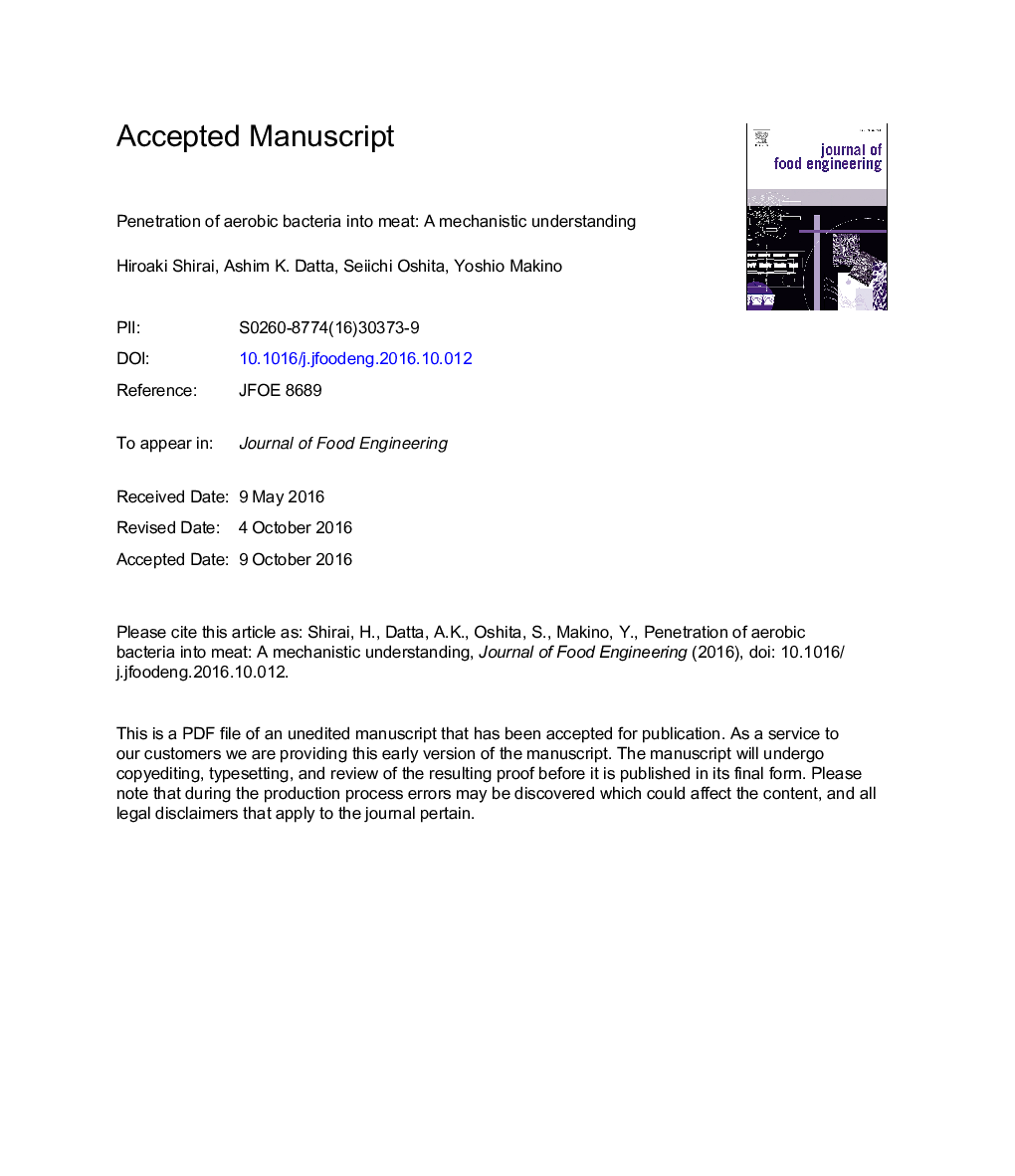| Article ID | Journal | Published Year | Pages | File Type |
|---|---|---|---|---|
| 4909214 | Journal of Food Engineering | 2017 | 51 Pages |
Abstract
Understanding bacterial penetration into meat is critical to make it safe for consumption. A mathematical model for transport of aerobic bacteria into meat was developed that includes bacterial motility, chemotaxis driven by oxygen concentration, and growth. The effect of proteolysis was also included in the model and the proteolytic kinetic parameters of Pseudomonas spp. on sarcoplasmic protein from poultry were measured. Deeper penetration into the meat due to motility is counteracted by chemotaxis toward the surface where oxygen concentration is higher and by a reduction in motility at deeper locations due to oxygen starvation. More rapid bacterial penetration during proteolysis is due to both high motility and increased oxygen diffusion (reduced starvation and chemotaxis) in a reduced viscosity fluid caused by the degradation of the sarcoplasmic protein. Penetration rates in both proteolytic and non-proteolytic bacteria are affected more by oxygen starvation than by chemotaxis toward oxygen.
Related Topics
Physical Sciences and Engineering
Chemical Engineering
Chemical Engineering (General)
Authors
Hiroaki Shirai, Ashim K. Datta, Seiichi Oshita,
